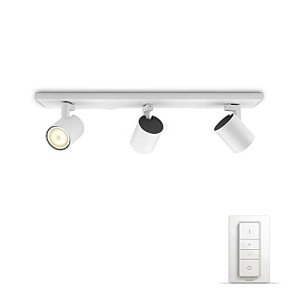Shop Lighting UK: Illuminating the Retail Experience
In the ever-evolving world of retail, the importance of shop lighting can not be overemphasized. It not only boosts the aesthetic appeal of items but likewise affects consumer habits, their mood, and the general shopping environment. With advancements in technology and design, shop owners in the UK have a myriad of options to select from when it emerges options. This article will explore the types of lighting readily available, their benefits, and considerations for developing the ideal ambiance in a retail space.
Significance of Proper Shop Lighting
Reliable shop lighting plays a vital role in client experience and can significantly impact sales. Here are some key reasons that appropriate lighting is necessary for retail environments:
- Highlighting Products: Good lighting accentuates products, making them more enticing to consumers.
- Developing Atmosphere: The best lighting can set the mood and evoke feelings, influencing purchasing choices.
- Enhancing Safety: Well-lit stores are safer, helping customers browse without risk of tripping or accidents.
- Improving Visual Merchandising: Proper lighting can improve displays, making them lively and attractive.
Kinds Of Shop Lighting
Shop owners can pick from different types of lighting, each serving various purposes, consisting of ambient, job, accent, and decorative lighting. Here's a breakdown of each type:
| Type of Lighting | Description | Best Uses |
|---|---|---|
| Ambient Lighting | Offers overall lighting to the area. | General retail locations like boutiques and grocery stores. |
| Task Lighting | Focuses on specific areas to improve presence for jobs. | Checkout counters and dressing rooms. |
| Accent Lighting | Emphasizes particular items or displays, developing a centerpiece. | Show cases, art, or promotional items. |
| Decorative Lighting | Includes aesthetic appeal and improves the overall decor. | Chandeliers and distinct fixtures in high-end stores. |
1. Ambient Lighting
Ambient lighting is the fundamental illumination within a shop. It fills the whole area, making sure that customers can see and browse easily. Sellers need to consider using LED panels or ceiling-mounted fixtures, as they offer energy performance and outstanding light distribution.
2. Job Lighting
Task lighting is important for locations w here specific activities take place, such as checkout counters or workstations. Shop owners can set up under-cabinet lighting or track lights to focus illumination on these areas, enhancing the benefit and experience for both personnel and clients.
3. Accent Lighting
Accent lighting assists accentuate particular items or functions within the store. This kind of lighting can be attained through spotlights, track lights, or tactically placed wall-mounted fixtures. It is particularly effective for showcasing featured products, promotional displays, or art work, assisting client focus where it's most needed.
4. Decorative Lighting
Beyond functionality, decorative lighting components include style and character to a retail space. Distinct fixtures, such as pendant lights or extra-large chandeliers, can produce a memorable atmosphere, particularly in stores or high-end sellers. These declaration pieces not just light up but likewise improve the shop's branding and visual appeal.
Choosing the Right Lighting for Your Shop
When picking lighting for a retail environment, shop owners must consider the list below elements:
- Store Type: Different kinds of retail need varying lighting services. A precious jewelry store may require softer, more focused lights, while a grocery store might need brighter ambient lighting.
- Color Temperature: The color of light can impact the perception of products. Warm lights (under 3000K) create a cozy feel, while cool lights (above 3000K) can make a space feel more contemporary.
- Energy Efficiency: The usage of LED lighting not only conserves energy however also lowers expenses gradually.
- Flexibility: Install dimmers or adjustable fixtures to adjust lighting for different celebrations or seasonal changes.
The Future of Shop Lighting
As technology progresses, shop lighting is becoming increasingly advanced. Here are some patterns forming the future of retail lighting in the UK:
- Smart Lighting Solutions: Integrated innovation enables remote control and automation of lighting systems through mobile phones or home assistants.
- Sustainable Lighting: There is a growing focus on eco-friendly solutions, with merchants choosing items that decrease environmental impact.
- Centerpiece Lighting: Retailers are significantly using lighting to develop particular centerpieces that direct client traffic and boost product displays.
Frequently Asked Questions about Shop Lighting in the UK
Q: What is the best type of lighting for a clothing store?A: A mix of
ambient and accent lighting is normally best. Ambient lighting is necessary for general presence, while accent lighting can assist highlight crucial pieces or collections. Q: How can I make my shop lighting more energy-efficient? A: Consider using LED lights, installing motion sensors, or integrating
dimmers. This reduces energy intake and expenses in the long run. Q: Should I use natural light in my shop?A: Yes, using natural light can improve customer experience whileminimizing energy expenses. However, it is very important to balance natural light with artificial lighting, especially on cloudy days. Q: How typically should I replace my shop's lighting fixtures?A: This depends on the type of fixtures used. LED lights can last approximately 25,000 hours, while traditional bulbs
may require to be replaced more regularly. Regular maintenance checks are advised. In a significantly competitive retail environment, shop lighting plays an important role in forming client experiences and driving sales. Merchants in the UK have a broad variety of choices and technologies at their disposal to produce the perfect atmosphere. By understanding the importance of the various kinds of lighting and how to implement them efficiently, shop owners can enhance their space, making shopping more pleasurable for clients while increasing their bottom line.

